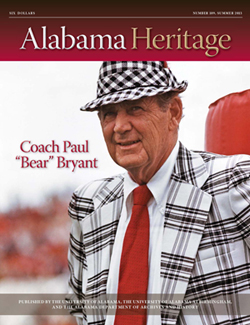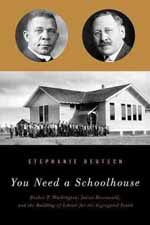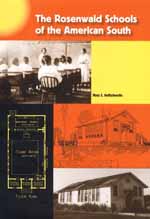|
On the cover: Coach Paul "Bear" Bryant. (Paul W. Bryant Museum)
|
FEATURE ABSTRACTS
 Bear Bryant, legendary coach,
Bear Bryant, legendary coach,also taught life-lessons to his players
(Paul W. Bryant Museum,
University of Alabama)
Coach Paul “Bear” Bryant: The Legacy Off the Field
By Winston Groom
When people hear reference to Coach Paul “Bear” Bryant’s accomplishments, they assume those occurred on the gridiron. And certainly, his coaching prowess remains legendary. However, many of his players consider Coach Bryant’s lessons on life, rather than those on football, to be his finest legacy. This feature article by Winston Groom, himself an Alabama legend acclaimed for Forrest Gump and his many other books, explores an aspect of Coach Bryant that is often overlooked, detailing his deep concern for the character, values, and citizenship of his players. Groom draws on extensive first-hand interviews with Gaylon McCollough, John Croyle, Marlin “Scooter” Dyess, Don McNeal, and many of Bryant’s other players, showing how decades later, their lives and communities remain shaped by Bryant’s influence. In many cases, these men credit Coach Bryant with instilling in them valuable lessons about class, loyalty, and work ethic. This special Alabama Heritage article, illustrated with images from the Paul W. Bryant Museum, offers a lovely keepsake for fans who remember Coach Bryant and an important primer for new generations whose own lives will be enriched by the many lessons he taught.
Additional Information
Visit the Paul W. Bryant Museum website to find out about upcoming events celebrating Coach Bryant’s 100th birthday. For more information about Winston Groom and his work, visit his website. The Encyclopedia of Alabama has additional articles on Winston Groom and Bear Bryant.
About the Author
Winston Groom is a class of 1965 Alabama graduate. He served as an officer in the US Army in Vietnam from 1966–1967 and was a reporter and columnist with the Washington Star in Washington, D.C., for nine years. In 1978 he published Better Times Than These, a novel about the Vietnam War, and has subsequently written eighteen works of fiction and nonfiction, including Forrest Gump, which was made into a movie, and The Crimson Tide: The Official Illustrated History of Alabama Football. He has been awarded the Harper Lee Prize and the Clarence Cason Award from the University of Alabama, and he has been a Pulitzer Prize finalist. In 2009 he was inducted into the University of Alabama College of Communications Hall of Fame. He lives with his wife and daughter in Point Clear.
By Winston Groom
When people hear reference to Coach Paul “Bear” Bryant’s accomplishments, they assume those occurred on the gridiron. And certainly, his coaching prowess remains legendary. However, many of his players consider Coach Bryant’s lessons on life, rather than those on football, to be his finest legacy. This feature article by Winston Groom, himself an Alabama legend acclaimed for Forrest Gump and his many other books, explores an aspect of Coach Bryant that is often overlooked, detailing his deep concern for the character, values, and citizenship of his players. Groom draws on extensive first-hand interviews with Gaylon McCollough, John Croyle, Marlin “Scooter” Dyess, Don McNeal, and many of Bryant’s other players, showing how decades later, their lives and communities remain shaped by Bryant’s influence. In many cases, these men credit Coach Bryant with instilling in them valuable lessons about class, loyalty, and work ethic. This special Alabama Heritage article, illustrated with images from the Paul W. Bryant Museum, offers a lovely keepsake for fans who remember Coach Bryant and an important primer for new generations whose own lives will be enriched by the many lessons he taught.
Additional Information
Visit the Paul W. Bryant Museum website to find out about upcoming events celebrating Coach Bryant’s 100th birthday. For more information about Winston Groom and his work, visit his website. The Encyclopedia of Alabama has additional articles on Winston Groom and Bear Bryant.
About the Author
Winston Groom is a class of 1965 Alabama graduate. He served as an officer in the US Army in Vietnam from 1966–1967 and was a reporter and columnist with the Washington Star in Washington, D.C., for nine years. In 1978 he published Better Times Than These, a novel about the Vietnam War, and has subsequently written eighteen works of fiction and nonfiction, including Forrest Gump, which was made into a movie, and The Crimson Tide: The Official Illustrated History of Alabama Football. He has been awarded the Harper Lee Prize and the Clarence Cason Award from the University of Alabama, and he has been a Pulitzer Prize finalist. In 2009 he was inducted into the University of Alabama College of Communications Hall of Fame. He lives with his wife and daughter in Point Clear.
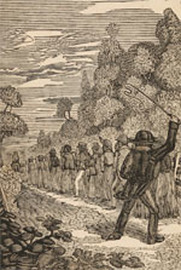 African Americans being driven
African Americans being driven from Virginia to the frontier
(Pictures of Slavery
in the Unites States of America
by George Bourne, 1834)
Fear and Finance in the Flush Times: A Southwestern Bandit, an Insurrection Scare, and the Overheated Economy of the Cotton Frontier
By Joshua D. Rothman
In the 1830s, as economic turmoil spiraled the Alabama frontier into a state of uncertainty and suspicion, a man named John Murrell occupied the attention of white slave owners. While on trial for slave stealing, Murrell encountered Virgil Stewart, a local man with a penchant for storytelling. Stewart wove a sensational and complex account of Murrell’s intentions—to lead the greatest slave insurrection the South had ever seen. The story was an exaggerated fabrication, but its effects rippled through communities, evoking fear and anxiety throughout Alabama’s homes.
Additional Information
See Joshua D. Rothman’s Flush Times and Fever Dreams: A Story of Capitalism and Slavery in the Age of Jackson (University of Georgia Press, 2012).
By Joshua D. Rothman
In the 1830s, as economic turmoil spiraled the Alabama frontier into a state of uncertainty and suspicion, a man named John Murrell occupied the attention of white slave owners. While on trial for slave stealing, Murrell encountered Virgil Stewart, a local man with a penchant for storytelling. Stewart wove a sensational and complex account of Murrell’s intentions—to lead the greatest slave insurrection the South had ever seen. The story was an exaggerated fabrication, but its effects rippled through communities, evoking fear and anxiety throughout Alabama’s homes.
Additional Information
See Joshua D. Rothman’s Flush Times and Fever Dreams: A Story of Capitalism and Slavery in the Age of Jackson (University of Georgia Press, 2012).
About the Author
Joshua D. Rothman is professor of history and director of the Frances S. Summersell Center for the Study of the South at the University of Alabama, where he has taught since 2000. He received his MA and PhD from the University of Virginia, and is the author of Notorious in the Neighborhood: Sex and Families across the Color Line in Virginia, 1787–1861 (2003) and Flush Times and Fever Dreams: A Story of Capitalism and Slavery in the Age of Jackson (2012). He is currently working on a history of Franklin and Armfield, the largest slave-trading firm in nineteenth-century America.
Joshua D. Rothman is professor of history and director of the Frances S. Summersell Center for the Study of the South at the University of Alabama, where he has taught since 2000. He received his MA and PhD from the University of Virginia, and is the author of Notorious in the Neighborhood: Sex and Families across the Color Line in Virginia, 1787–1861 (2003) and Flush Times and Fever Dreams: A Story of Capitalism and Slavery in the Age of Jackson (2012). He is currently working on a history of Franklin and Armfield, the largest slave-trading firm in nineteenth-century America.
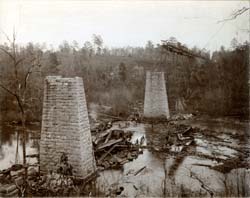 The aftermath of the Cahaba River Bridge disaster.
The aftermath of the Cahaba River Bridge disaster. (Louisville and Nashville Railroad records
Archives & Special Collections
University of Louisville)
Tragedy on the Tracks: The 1896 Cahaba Bridge Train Wreck
By Terri L. Hicks
Several days after Christmas, 1896, tragedy struck near Birmingham, when a bridge collapsed over the Cahaba River, leading to two separate train wrecks on the same day. Few survived the first wreck, leaving little firsthand evidence of the accident’s causes. Over time, investigators discerned the problem—but due to a number of factors, they did not acknowledge it for decades. Now, author Terri Hicks helps set the record straight, explaining the construction errors that led to the accidents, detailing the cover up that obscured the wreck’s origin, and clarifying the real events that led to the 1896 tragedy over the Cahaba.
By Terri L. Hicks
Several days after Christmas, 1896, tragedy struck near Birmingham, when a bridge collapsed over the Cahaba River, leading to two separate train wrecks on the same day. Few survived the first wreck, leaving little firsthand evidence of the accident’s causes. Over time, investigators discerned the problem—but due to a number of factors, they did not acknowledge it for decades. Now, author Terri Hicks helps set the record straight, explaining the construction errors that led to the accidents, detailing the cover up that obscured the wreck’s origin, and clarifying the real events that led to the 1896 tragedy over the Cahaba.
Additional Information
For more information about the history of the L&N Railroad, please visit the website.
About the Author
Terri L. Hicks recently graduated from the University of Alabama at Birmingham with a master’s degree in history and is an active volunteer for Birmingham’s Oak Hill Cemetery, Arlington Antebellum House and Gardens, and The Lyric Theater. She organized the first history tour for Oak Hill Cemetery and is currently the co-chairman of the docent program at Arlington Antebellum House. During her work with the cemetery, Hicks found a calling in her portrayals of Catherine Louise Wooster, the madam who was so important during the cholera epidemic in Birmingham in 1873, and Emma Hawes, a murder victim in Birmingham in 1888. Hicks has discovered a love for the history of the city’s founding and the people who made it happen, and for the past several years she has spoken at various events about Oak Hill, Lou Wooster, and the founding of the Magic City.
For more information about the history of the L&N Railroad, please visit the website.
About the Author
Terri L. Hicks recently graduated from the University of Alabama at Birmingham with a master’s degree in history and is an active volunteer for Birmingham’s Oak Hill Cemetery, Arlington Antebellum House and Gardens, and The Lyric Theater. She organized the first history tour for Oak Hill Cemetery and is currently the co-chairman of the docent program at Arlington Antebellum House. During her work with the cemetery, Hicks found a calling in her portrayals of Catherine Louise Wooster, the madam who was so important during the cholera epidemic in Birmingham in 1873, and Emma Hawes, a murder victim in Birmingham in 1888. Hicks has discovered a love for the history of the city’s founding and the people who made it happen, and for the past several years she has spoken at various events about Oak Hill, Lou Wooster, and the founding of the Magic City.
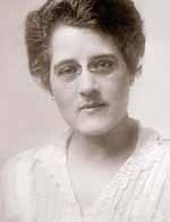 Pattie Ruffner was prominent
Pattie Ruffner was prominentin the national suffrage movement.
(Library of Congress)
Pattie Ruffner Jacobs and the Transformation of Women’s Rights
By Marlene Hunt Rikard and Wayne Flynt
Many people fail to realize the instrumental role Alabama women such as Pattie Ruffner Jacobs played in securing national suffrage rights for women. Born in the 1870s, Ruffner moved to Alabama as a young lady, met and married Solon Jacobs, and embarked on a lifetime of leadership and service dedicated to promoting the rights of women. Jacobs worked on both state and national suffrage campaigns, took on prominent congressmen whose derision only fueled her ambitions, and helped secure the passage of the Nineteenth Amendment. Never one to rest complacently, Jacobs continued her lifetime of service, devoting her later years to various political causes and to groups such as the League of Women Voters. Throughout her life, she labored tirelessly to secure the equal status of women in both her state and the nation.
By Marlene Hunt Rikard and Wayne Flynt
Many people fail to realize the instrumental role Alabama women such as Pattie Ruffner Jacobs played in securing national suffrage rights for women. Born in the 1870s, Ruffner moved to Alabama as a young lady, met and married Solon Jacobs, and embarked on a lifetime of leadership and service dedicated to promoting the rights of women. Jacobs worked on both state and national suffrage campaigns, took on prominent congressmen whose derision only fueled her ambitions, and helped secure the passage of the Nineteenth Amendment. Never one to rest complacently, Jacobs continued her lifetime of service, devoting her later years to various political causes and to groups such as the League of Women Voters. Throughout her life, she labored tirelessly to secure the equal status of women in both her state and the nation.
About the Authors
Marlene Hunt Rikard is a professor emeritus of history, Samford University, where she initiated the course on history of American women, and served as the director of the London Studies Program. With degrees from three Alabama universities (BAA Auburn University; MA, Samford University; PhD, University of Alabama), her research interests have focused on the state, including work on the Tennessee Coal, Iron and Railroad Company (U.S. Steel) and the steel industry in the Magic City.
Wayne Flynt is a fifth-generation Alabamian who has written about Alabama for more than fifty years as a professor of history at Samford and Auburn Universities, where he taught more than 6,000 undergraduate students while directing forty master’s theses and twenty-five PhD dissertations. His eight books about Alabama span most of the nineteenth and twentieth centuries, dealing with subjects as diverse as religion and culture to political economy.
Marlene Hunt Rikard is a professor emeritus of history, Samford University, where she initiated the course on history of American women, and served as the director of the London Studies Program. With degrees from three Alabama universities (BAA Auburn University; MA, Samford University; PhD, University of Alabama), her research interests have focused on the state, including work on the Tennessee Coal, Iron and Railroad Company (U.S. Steel) and the steel industry in the Magic City.
Wayne Flynt is a fifth-generation Alabamian who has written about Alabama for more than fifty years as a professor of history at Samford and Auburn Universities, where he taught more than 6,000 undergraduate students while directing forty master’s theses and twenty-five PhD dissertations. His eight books about Alabama span most of the nineteenth and twentieth centuries, dealing with subjects as diverse as religion and culture to political economy.
Department ABSTRACTS
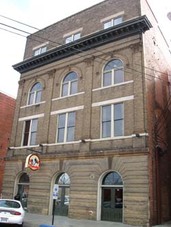 The Steiner-Lobman building (1908)
The Steiner-Lobman building (1908) (Robin McDonald)
Southern Architecture and Preservation
Making Preservation Profitable
By Chloe Mercer
Many prospective preservationists are surprised to learn that they may qualify for historic preservation tax incentives, thanks to a federal program dating from the bicentennial. Under this program, called the Federal Historic Preservation Tax Incentives Program, participants who restore structures listed on the National Register of Historic Places may receive up to a 20 percent tax credit. This significant program encourages restoration rather than destruction, promoting continued awareness and celebration of historic structures.
Additional Information
Details about the Historic Preservation Tax Incentives program is available at the National Park Services website.
About the Author
Chloe Mercer is the coordinator of the Federal Historic Preservation Tax Incentive Program at the Alabama Historical Commission. Robert Gamble, standing editor of the “Southern Architecture and Preservation” department of Alabama Heritage, is senior architectural historian for the Alabama Historical Commission.
Making Preservation Profitable
By Chloe Mercer
Many prospective preservationists are surprised to learn that they may qualify for historic preservation tax incentives, thanks to a federal program dating from the bicentennial. Under this program, called the Federal Historic Preservation Tax Incentives Program, participants who restore structures listed on the National Register of Historic Places may receive up to a 20 percent tax credit. This significant program encourages restoration rather than destruction, promoting continued awareness and celebration of historic structures.
Additional Information
Details about the Historic Preservation Tax Incentives program is available at the National Park Services website.
About the Author
Chloe Mercer is the coordinator of the Federal Historic Preservation Tax Incentive Program at the Alabama Historical Commission. Robert Gamble, standing editor of the “Southern Architecture and Preservation” department of Alabama Heritage, is senior architectural historian for the Alabama Historical Commission.
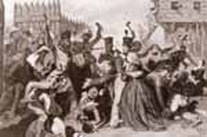 The massacre at Fort Mims
The massacre at Fort Mims (Alabama Department of Archives and History)
Becoming Alabama: Quarter by Quarter
By Joseph W. Pearson, Megan L. Bever, and Matthew L. Downs
Editor’s Note: Alabama Heritage, the Summersell Center for Study of the South, the University of Alabama Department of History, and the Alabama Tourism Department offer this department as a part of the statewide "Becoming Alabama" initiative—a cooperative venture of state organizations to commemorate Alabama’s experiences related to the Creek War, the Civil War, and the civil rights movement. Quarter by quarter we will take you to the corresponding seasons 200, 150, and 50 years ago—sometimes describing pivotal events, sometimes describing daily life, but always illuminating a world in flux. We will wait for the ultimate outcomes as our forebears did—over time. For those joining the story in progress, you can find earlier quarters on our website.
This quarter, we explore the contest for Mobile and its valuable bay and Col. John Bowyer’s construction of a fort in that area, Gen. Nathan Bedford Forrest’s ingenious defeat of Gen. Abel D. Streight, and the tumultuous events occurring in Birmingham in the spring of 1963. The latter, which comprised a significant section of the civil rights movement, receive in-depth treatment from author Matthew L. Downs, who describes the Children’s March, Martin Luther King Jr.’s “Letter from a Birmingham Jail,” and the violence that was directed at protestors in Kelly Ingram Park. Throughout these installments, the authors remind us of the important events and trends that shaped our state’s identity.
Additional Information
The Encyclopedia of Alabama has additional articles on Fort Mims and the University of Alabama in Huntsville. For more information on the battles, please see their National Park Service websites of Vicksburg and Gettysburg.
About the Authors
Joseph W. Pearson is a PhD student in the department of history at the University of Alabama. His research interests include the nineteenth-century South, antebellum politics, and political culture. Megan L. Bever is currently a doctoral student in the department of history at the University of Alabama. Her research interests include the nineteenth-century South and the Civil War in American culture. Matthew L. Downs (PhD, Alabama) is an assistant professor of history at the University of Mobile. His dissertation focused on the federal government’s role in the economic development of the Tennessee Valley.
By Joseph W. Pearson, Megan L. Bever, and Matthew L. Downs
Editor’s Note: Alabama Heritage, the Summersell Center for Study of the South, the University of Alabama Department of History, and the Alabama Tourism Department offer this department as a part of the statewide "Becoming Alabama" initiative—a cooperative venture of state organizations to commemorate Alabama’s experiences related to the Creek War, the Civil War, and the civil rights movement. Quarter by quarter we will take you to the corresponding seasons 200, 150, and 50 years ago—sometimes describing pivotal events, sometimes describing daily life, but always illuminating a world in flux. We will wait for the ultimate outcomes as our forebears did—over time. For those joining the story in progress, you can find earlier quarters on our website.
This quarter, we explore the contest for Mobile and its valuable bay and Col. John Bowyer’s construction of a fort in that area, Gen. Nathan Bedford Forrest’s ingenious defeat of Gen. Abel D. Streight, and the tumultuous events occurring in Birmingham in the spring of 1963. The latter, which comprised a significant section of the civil rights movement, receive in-depth treatment from author Matthew L. Downs, who describes the Children’s March, Martin Luther King Jr.’s “Letter from a Birmingham Jail,” and the violence that was directed at protestors in Kelly Ingram Park. Throughout these installments, the authors remind us of the important events and trends that shaped our state’s identity.
Additional Information
The Encyclopedia of Alabama has additional articles on Fort Mims and the University of Alabama in Huntsville. For more information on the battles, please see their National Park Service websites of Vicksburg and Gettysburg.
About the Authors
Joseph W. Pearson is a PhD student in the department of history at the University of Alabama. His research interests include the nineteenth-century South, antebellum politics, and political culture. Megan L. Bever is currently a doctoral student in the department of history at the University of Alabama. Her research interests include the nineteenth-century South and the Civil War in American culture. Matthew L. Downs (PhD, Alabama) is an assistant professor of history at the University of Mobile. His dissertation focused on the federal government’s role in the economic development of the Tennessee Valley.
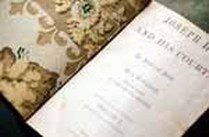 An example of S.H. Goetzel's wallpaper binding
An example of S.H. Goetzel's wallpaper binding (Joel Brouwer)
Revealing Hidden Collections
Reason Not the Need: The Wallpaper Books of Mobile Publisher S.H. Goetzel
By Jessica Lacher-Feldman
During the Civil War, publishers in the Confederate states faced the same difficulty procuring materials as their counterparts in other professions. Undaunted, these professionals resorted to the materials at hand, and today the University of Alabama Libraries’ Division of Special Collections possesses several beautiful examples of their ingenuity: books bound in wallpaper. Archivist Jessica Lacher-Feldman takes us through the work of Mobile’s S.H. Goetzel, showing how he continued to produce works of literary art and beauty even when supplies were scarce or non-existent.
Additional Information
For more information about the University of Alabama W. S. Hoole Special Collections Library, visit their website.
About the Author
Jessica Lacher-Feldman, formerly of the W. S. Hoole Special Collections Library at the University of Alabama, now serves as the head of special collections at the Hill Memorial Library at Louisiana State University. Louis A. Pitschmann, standing editor of the “Revealing Hidden Collections” department of Alabama Heritage, is dean of the University Libraries at the University of Alabama and director of the Alabama Center for the Book, which co-sponsor this department.
Reason Not the Need: The Wallpaper Books of Mobile Publisher S.H. Goetzel
By Jessica Lacher-Feldman
During the Civil War, publishers in the Confederate states faced the same difficulty procuring materials as their counterparts in other professions. Undaunted, these professionals resorted to the materials at hand, and today the University of Alabama Libraries’ Division of Special Collections possesses several beautiful examples of their ingenuity: books bound in wallpaper. Archivist Jessica Lacher-Feldman takes us through the work of Mobile’s S.H. Goetzel, showing how he continued to produce works of literary art and beauty even when supplies were scarce or non-existent.
Additional Information
For more information about the University of Alabama W. S. Hoole Special Collections Library, visit their website.
About the Author
Jessica Lacher-Feldman, formerly of the W. S. Hoole Special Collections Library at the University of Alabama, now serves as the head of special collections at the Hill Memorial Library at Louisiana State University. Louis A. Pitschmann, standing editor of the “Revealing Hidden Collections” department of Alabama Heritage, is dean of the University Libraries at the University of Alabama and director of the Alabama Center for the Book, which co-sponsor this department.
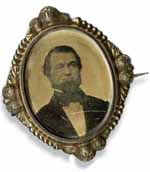 Tintype of William Lowndes Yancey.
Tintype of William Lowndes Yancey. (Alabama Department of Archives and History)
Alabama Treasures
A Keepsake of William Lowndes Yancey
By Ralph Draughon Jr.
A new addition to the Alabama Department of Archives and History collection offers a sentimental portrait of a man most remembered for his incendiary politics. Thanks to descendents of Confederate rhetorician William Lowndes Yancey, the archives now owns a valuable commemorative locket worn by Yancey’s wife Sarah. In addition to including a small portrait of Yancey, the locket offers an example of Victorian-era hair jewelry. Such relics remain the centerpiece of the state archives, and this piece reminds visitors that although best remembered as a fiery southerner, Yancey was also a beloved husband and father.
Additional Information
For more information on the Alabama Department of Archives and History, please visit its website. The Encyclopedia of Alabama also has articles on the history of the ADAH and on Yancey.
About the Author
Historian Ralph Draughon Jr. has recently co-authored Lost Auburn: A Village Remembered in Period Photographs (New South Press, 2012), serves on the Alabama Historical Commission, and has been actively involved in the Alabama Historical Association and the Alabama Trust for Historic Preservation.
A Keepsake of William Lowndes Yancey
By Ralph Draughon Jr.
A new addition to the Alabama Department of Archives and History collection offers a sentimental portrait of a man most remembered for his incendiary politics. Thanks to descendents of Confederate rhetorician William Lowndes Yancey, the archives now owns a valuable commemorative locket worn by Yancey’s wife Sarah. In addition to including a small portrait of Yancey, the locket offers an example of Victorian-era hair jewelry. Such relics remain the centerpiece of the state archives, and this piece reminds visitors that although best remembered as a fiery southerner, Yancey was also a beloved husband and father.
Additional Information
For more information on the Alabama Department of Archives and History, please visit its website. The Encyclopedia of Alabama also has articles on the history of the ADAH and on Yancey.
About the Author
Historian Ralph Draughon Jr. has recently co-authored Lost Auburn: A Village Remembered in Period Photographs (New South Press, 2012), serves on the Alabama Historical Commission, and has been actively involved in the Alabama Historical Association and the Alabama Trust for Historic Preservation.
 Poster for a Catholic "motor mission."
Poster for a Catholic "motor mission." (DePaul University Libraries)
Southern Religion
The Catholic Evangelical Movement in Alabama
By Natalie J. Ring
In this quarter’s installment of “Southern Religion,” Natalie Ring considers the history of Alabama Catholicism through the life and service of one of its practitioners, Sister Peter Claver. Born Hannah Elizabeth Fahy, Claver dedicated her adult life to service and advocacy, taking the name of the saint who ministered to slaves. Throughout her work, Claver influenced many individuals and promoted social justice, leaving her state better than she found it.
About the Author
Natalie J. Ring is associate professor of history at the University of Texas at Dallas. She is the author of The Problem South: Region, Empire, and the New Liberal State (University of Georgia Press, 2012) and co-editor of The Folly of Jim Crow: Rethinking the Segregated South (Texas A&M Press, 2012). Joshua D. Rothman, standing editor of the “Southern Religion” department of Alabama Heritage, is professor of history at the University of Alabama and director of the university’s Frances S. Summersell Center for the Study of the South, which sponsors this department.
The Catholic Evangelical Movement in Alabama
By Natalie J. Ring
In this quarter’s installment of “Southern Religion,” Natalie Ring considers the history of Alabama Catholicism through the life and service of one of its practitioners, Sister Peter Claver. Born Hannah Elizabeth Fahy, Claver dedicated her adult life to service and advocacy, taking the name of the saint who ministered to slaves. Throughout her work, Claver influenced many individuals and promoted social justice, leaving her state better than she found it.
About the Author
Natalie J. Ring is associate professor of history at the University of Texas at Dallas. She is the author of The Problem South: Region, Empire, and the New Liberal State (University of Georgia Press, 2012) and co-editor of The Folly of Jim Crow: Rethinking the Segregated South (Texas A&M Press, 2012). Joshua D. Rothman, standing editor of the “Southern Religion” department of Alabama Heritage, is professor of history at the University of Alabama and director of the university’s Frances S. Summersell Center for the Study of the South, which sponsors this department.
 An ovate rock snail,
An ovate rock snail, rediscovered in 2011
(David M. Frings)
Nature Journal
Vagabonding for van der Schalie
By L. J. Davenport
As mass extinctions ravage the planet, L. J. Davenport looks back at Henry van der Schalie, one of the pioneer conservationists whose early explorations into the waters of the Cahaba and other southern realms helped identify areas of rapid species loss. Davenport also appraises concerned readers about the current state of conversation issues and gleefully reports the important success story of one Alabama species.
About the Author
Larry Davenport is a professor of biology at Samford University, Birmingham.
Vagabonding for van der Schalie
By L. J. Davenport
As mass extinctions ravage the planet, L. J. Davenport looks back at Henry van der Schalie, one of the pioneer conservationists whose early explorations into the waters of the Cahaba and other southern realms helped identify areas of rapid species loss. Davenport also appraises concerned readers about the current state of conversation issues and gleefully reports the important success story of one Alabama species.
About the Author
Larry Davenport is a professor of biology at Samford University, Birmingham.
Reading the Southern Past
The Rosenwald Schools: A Philantrhopic Success Story
By Stephen Goldfarb
This quarter’s book review explores the significance of the Rosenwald Schools, a collaborative project entrepreneur Julius Rosenwald and educator Booker T. Washington designed to create schools for southern African Americans. Goldfarb reviews two texts on this topic—Stephanie Deutsch’s You Need a Schoolhouse: Booker T. Washington, Julius Rosenwald, and the Building of Schools for the Segregated South (Northwestern University Press, 2011) and Mary S. Hoffschwelle’s The Rosenwald Schools of the American South (University Press of Florida, 2006)—and also considers a biography of Rosenwald, Julius Rosenwald: The Man Who Built Sears, Roebuck and Advanced the Cause of Black Education in the American South (Indiana University Press, 2006), by Peter M. Ascoli. The result is a useful introduction to the schools and the man who made them possible.
About the Author
Stephen Goldfarb holds a PhD in the history of science and technology. He retired from a public library in 2003.
The Rosenwald Schools: A Philantrhopic Success Story
By Stephen Goldfarb
This quarter’s book review explores the significance of the Rosenwald Schools, a collaborative project entrepreneur Julius Rosenwald and educator Booker T. Washington designed to create schools for southern African Americans. Goldfarb reviews two texts on this topic—Stephanie Deutsch’s You Need a Schoolhouse: Booker T. Washington, Julius Rosenwald, and the Building of Schools for the Segregated South (Northwestern University Press, 2011) and Mary S. Hoffschwelle’s The Rosenwald Schools of the American South (University Press of Florida, 2006)—and also considers a biography of Rosenwald, Julius Rosenwald: The Man Who Built Sears, Roebuck and Advanced the Cause of Black Education in the American South (Indiana University Press, 2006), by Peter M. Ascoli. The result is a useful introduction to the schools and the man who made them possible.
About the Author
Stephen Goldfarb holds a PhD in the history of science and technology. He retired from a public library in 2003.
